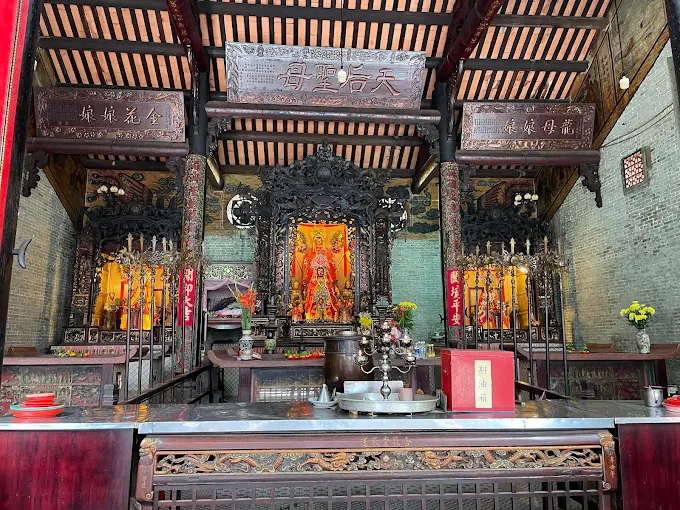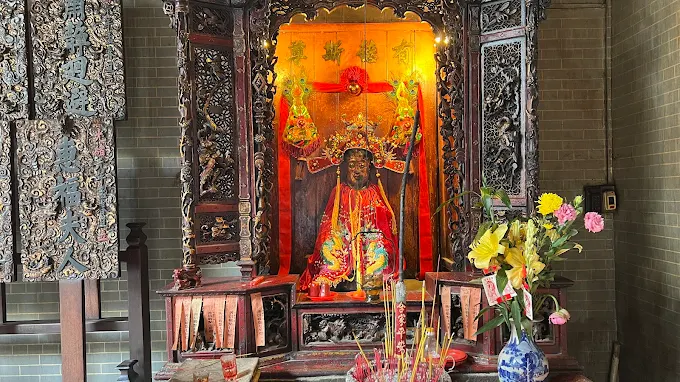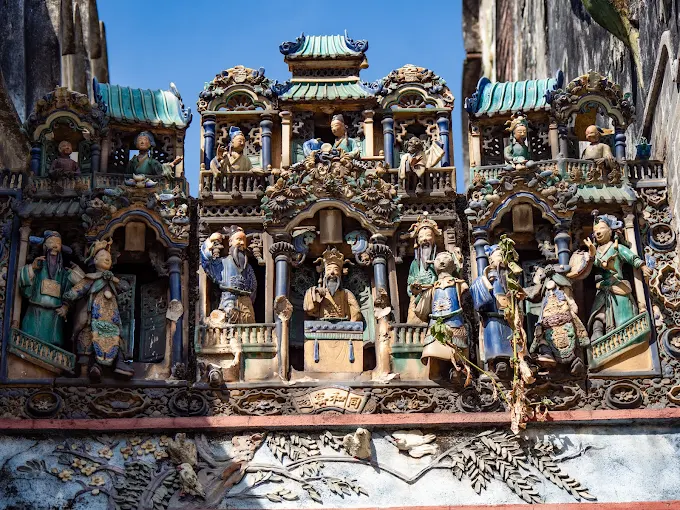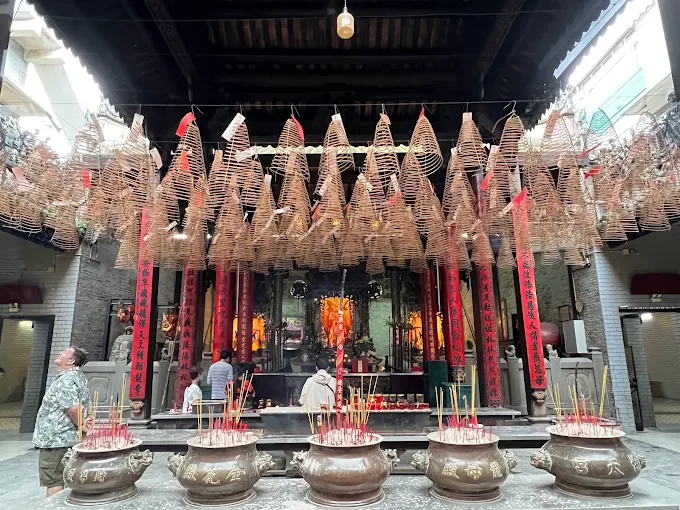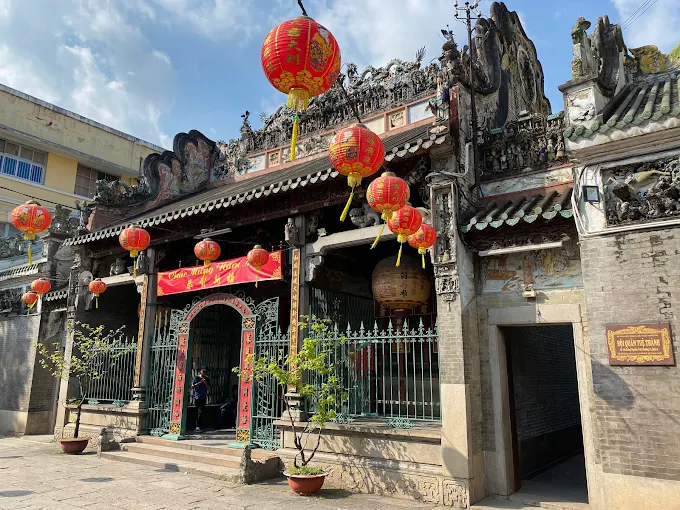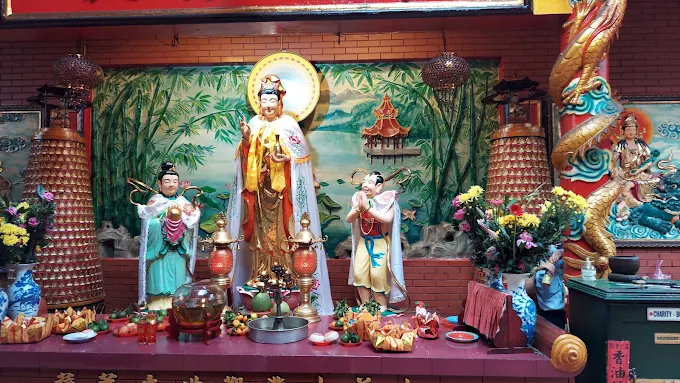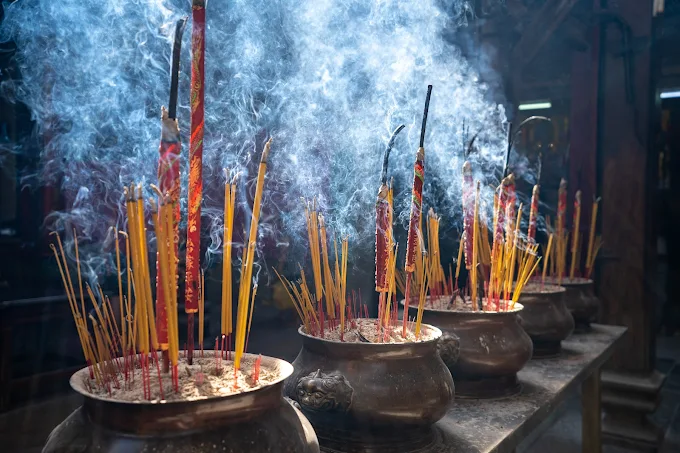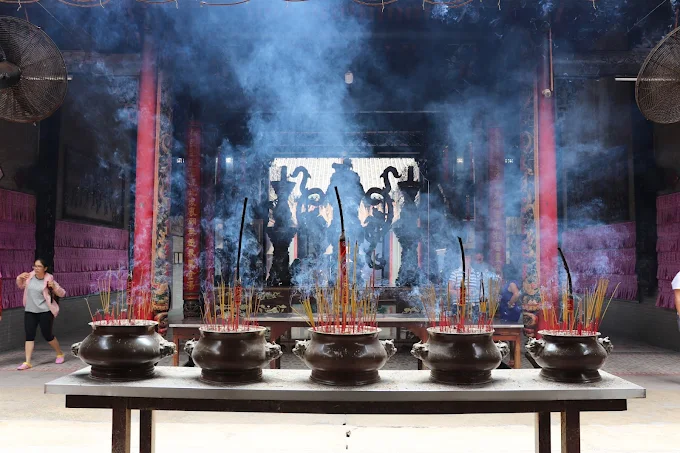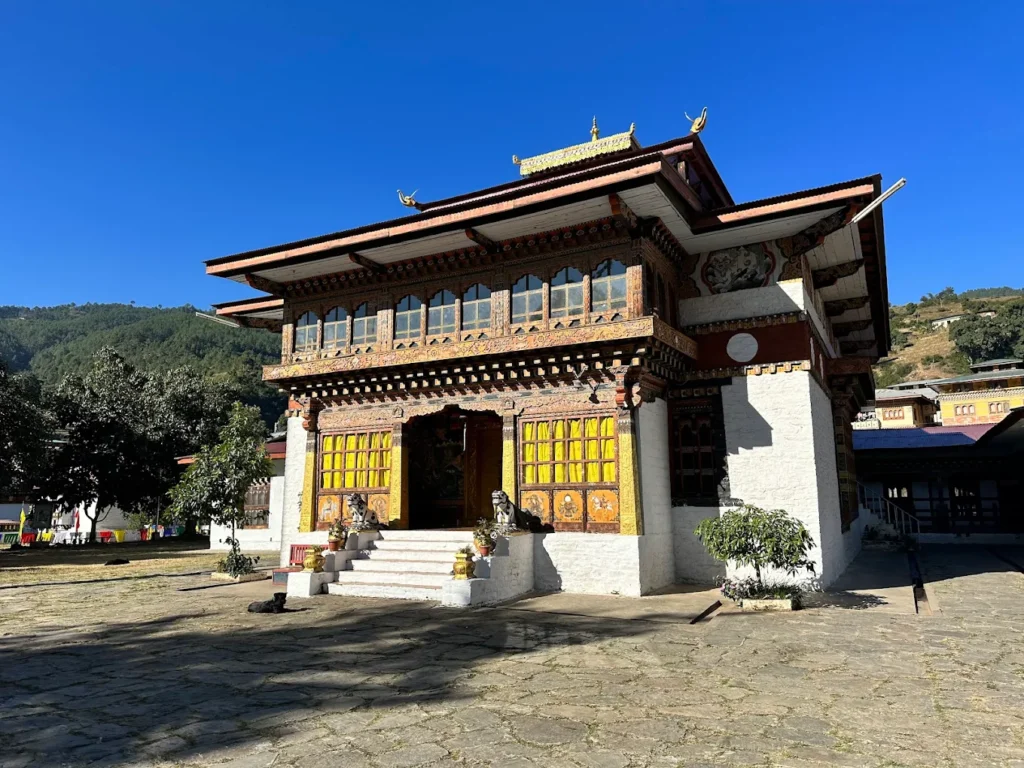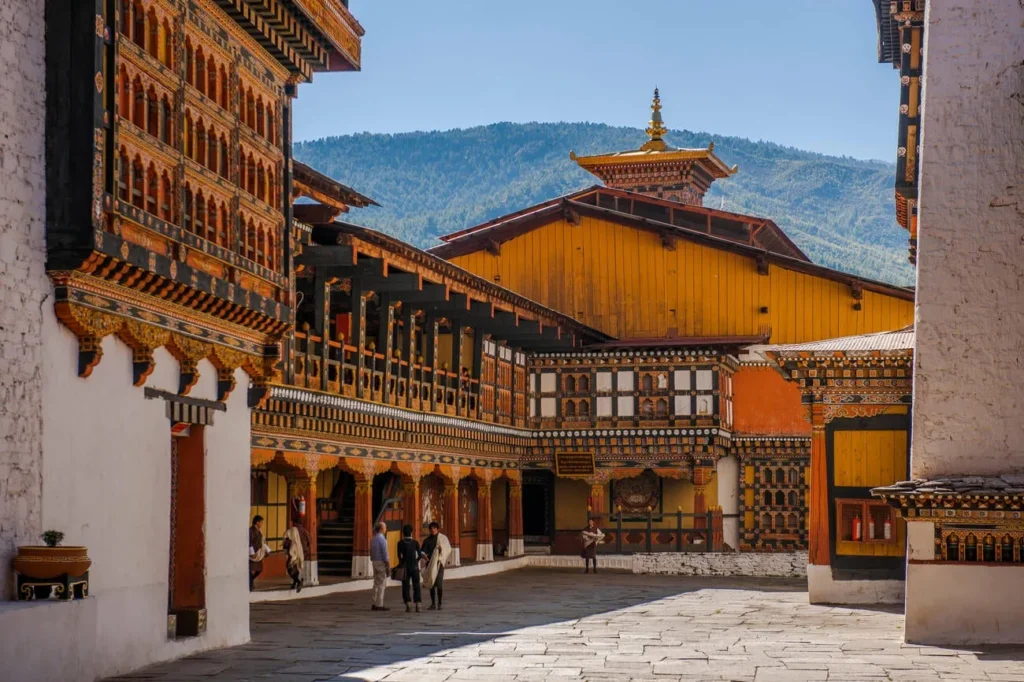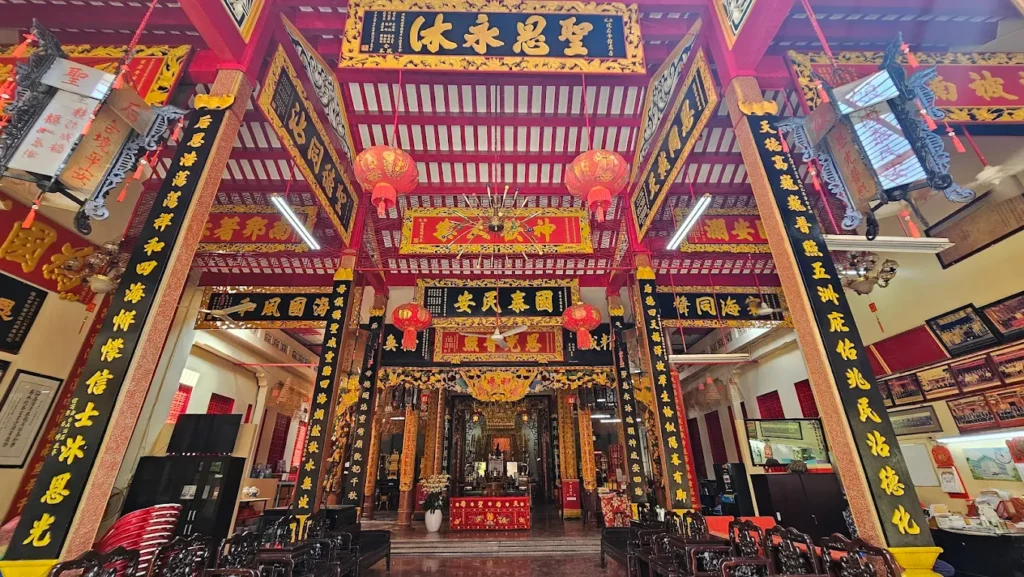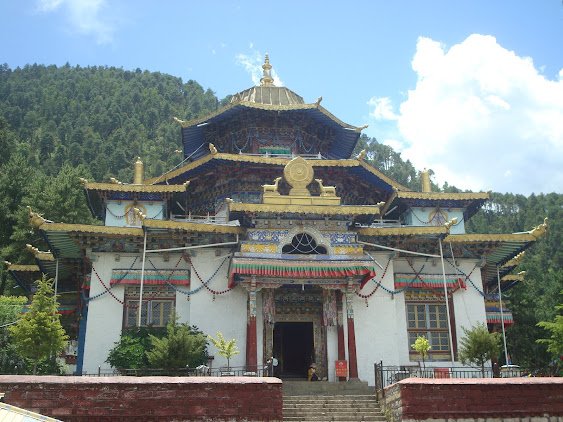Thien Hau Pagoda: Saigon’s Celestial Citadel of Chinese Devotion
Nestled on Nguyễn Trãi Street in District 5’s vibrant Chợ Lớn, Thien Hau Pagoda, built in 1760 by Cantonese Chinese immigrants, radiates celestial grandeur with its curved tube-tile roofs and intricate gốm sứ [ceramic] motifs. This Taoist pagoda [chùa], a national cultural-historical site since 1993, honors Mazu [Thiên Hậu], the sea goddess, alongside Guan Gong [Quan Công] and the God of Fortune [Phúc Đức Chính Thần]. Its incense-filled halls and glowing incense burners [lư hương] draw devotees for prayers for peace [cầu an]. A hub for the Chinese community, the Thien Hau Pagoda listing beckons pilgrims and travelers to Ho Chi Minh City’s spiritual soul.
Haven of Celestial Grace: Overview and Significance
Thien Hau Pagoda, a Taoist beacon in District 5, blends Chinese mysticism with Vietnamese devotion, enriching the Thien Hau Pagoda listing. Its historical legacy, cultural vibrancy, and community role make it a cornerstone of Ho Chi Minh City’s spiritual landscape.
Historical Roots and Legacy
Constructed in 1760 by Cantonese Chinese immigrants in Chợ Lớn, the pagoda became a spiritual anchor for the Chinese community, earning national cultural-historical status in 1993. Its Qing dynasty-inspired architecture remains vibrant. The Thien Hau Pagoda listing highlights its role as a center for prayers and festivals in Ho Chi Minh City.
- Key Milestones:
- 1760: Built by Cantonese Chinese in District 5.
- 1993: Designated national cultural-historical site.
- Ongoing: Hosts prayers and Lunar New Year festivals.
Cultural and Spiritual Significance
Rooted in Taoism [Đạo giáo], a Chinese philosophy emphasizing harmony with the Dao, the universal force, through balance, humility, and spiritual rituals, the pagoda fosters devotion via prayers for peace and Mazu’s Birthday [Vía Bà]. Its ornate design draws pilgrims, while the Thien Hau Pagoda listing enhances Ho Chi Minh City’s spiritual tourism, complementing Jade Emperor Pagoda.
- Cultural Roles:
- Preserves Taoist practices through prayers.
- Boosts Chợ Lớn’s spiritual tourism with iconic design.
- Unites Chinese and Vietnamese communities.
Community and Global Connections
The pagoda serves District 5’s Chinese community with Lunar New Year [Tết Nguyên Đán] celebrations, uniting locals. Its 2024 Mazu’s Birthday festival drew thousands, fostering cultural bonds. The Thien Hau Pagoda listing attracts global pilgrims, supported by Vietnam’s tourism, connecting local devotion with international curiosity.
- Community Impact:
- Hosts Lunar New Year celebrations.
- Unites communities through prayer ceremonies.
- Draws global visitors, promoting Taoist heritage.
As incense spirals and lư hương glow, the pagoda’s lasting devotion invites exploration of its architectural grandeur, a highlight of the Thien Hau Pagoda listing.
Citadel of Ornate Splendor: Architectural and Spiritual Features
Thien Hau Pagoda’s 1760 design, with Qing dynasty aesthetics, radiates mystique. Its sacred halls and relics enhance its appeal, making it a cornerstone of the Thien Hau Pagoda architecture.
Iconic Design and Structures
The pagoda’s curved tube-tile roofs, adorned with gốm sứ dragons, frame a vibrant courtyard with lư hương, burning continuously. The main hall [chánh điện], dedicated to Mazu, features intricate wood carvings. A secondary hall honors Guan Gong, anchoring the Thien Hau Pagoda architecture with celestial charm.
- Design Highlights:
- Curved tube-tile roofs with gốm sứ dragons.
- Vibrant courtyard with iconic lư hương.
- Main hall with intricate wood carvings.
Sacred Statues and Relics
The main hall houses a wooden Mazu statue, adorned with silks, symbolizing sea protection. Guan Gong and God of Fortune statues, crafted in wood, inspire loyalty and prosperity. The Golden Flower Goddess [Kim Hoa Nương Nương] altar adds fertility blessings, amplifying the Thien Hau Pagoda listing’s spiritual potency.
- Statue Details:
- Mazu: Wood, ~1 meter, central deity.
- Guan Gong: Wood, symbolizing loyalty.
- Golden Flower Goddess: Altar for fertility.
Artistry and Environmental Harmony
Cantonese artisans crafted gốm sứ and wood carvings, depicting dragons and phoenixes, rooted in Taoist aesthetics. The pagoda’s compact design, with lush greenery, aligns with Vietnam’s eco-conscious ethos, enhancing the Thien Hau Pagoda architecture with serene surroundings.
- Artistic Features:
- Gốm sứ dragons and phoenixes, hand-crafted.
- Carved wooden altars with Taoist symbols.
- Eco-friendly courtyard design.
The pagoda’s ornate artistry and celestial setting invite exploration of its rituals, a vital part of the Thien Hau Pagoda listing.
Rhythms of Celestial Devotion: Rituals and Practices
Thien Hau Pagoda pulses with Taoist rituals, blending prayers and festivals. Its vibrant practices draw devotees, enriching the Thien Hau Pagoda listing.
Daily and Unique Rituals
Priests lead prayers for peace, chanting Taoist mantras to invoke Mazu’s blessings, fostering harmony. Devotees offer incense at the Mazu altar, seeking safe voyages. The Golden Flower Goddess altar’s fertility prayers draw couples, a unique practice central to the Thien Hau Pagoda listing’s spiritual outreach.
- Daily Practices:
- Prayers for peace, ~30 minutes.
- Incense offerings at Mazu altar.
- Fertility prayers at Golden Flower Goddess altar.
Festival Traditions
The pagoda hosts Mazu’s Birthday [Vía Bà] on the 23rd day of the third lunar month, with dragon dances and prayers, drawing thousands. Lunar New Year celebrations feature lamp lightings, uniting District 5’s Chinese community and enhancing the Thien Hau Pagoda listing’s vibrancy.
- Festival Highlights:
- Mazu’s Birthday: Dragon dances, March.
- Lunar New Year: Lamp lightings, January/February.
- Communal gatherings, fostering unity.
Community and Visitor Engagement
Led by Taoist priests, the pagoda engages District 5’s Chinese community with festivals and prayers. Visitors join incense offerings or prayer ceremonies, guided by priests, enriching the Thien Hau Pagoda listing. Community events strengthen ties, connecting local devotion with global pilgrims.
- Engagement Activities:
- Guided prayer sessions, ~15 minutes.
- Festival participation, open to visitors.
- Community events for cultural exchange.
The pagoda’s celestial rituals guide visitors to practical insights, ensuring a seamless journey to its sacred grounds.
Journey to Thien Hau: Visitor Information
Thien Hau Pagoda, a celestial retreat in District 5’s Chợ Lớn, offers easy access for those exploring the Thien Hau Pagoda listing. Its urban logistics and nearby attractions make it a must-visit in Ho Chi Minh City.
Navigating the Pagoda
Located at 710 Nguyễn Trãi, the pagoda is a short drive from District 1 via Trần Hưng Đạo Street. A walk through Chợ Lớn’s vibrant streets offers a cultural approach. The courtyard, with glowing lư hương, is a brief walk from the entrance, with parking nearby for the Thien Hau Pagoda listing.
- Navigation Tips:
- Drive via Trần Hưng Đạo to Nguyễn Trãi.
- Walk through Chợ Lớn for cultural views.
- Expect a short walk from parking.
Practical Details and Etiquette
Open daily from 8 AM to 4:30 PM, the pagoda welcomes visitors without an entry fee, though donations support maintenance. Dress modestly (shoulders and knees covered), remove shoes in the main hall, and avoid photography inside. Silence phones to respect prayer spaces. The address is 710 Nguyễn Trãi, Phường 11, District 5, Ho Chi Minh City, vital for the Thien Hau Pagoda listing.
- Logistics:
- Address: 710 Nguyễn Trãi, Phường 11, District 5, Ho Chi Minh City.
- Hours: 8 AM–4:30 PM, daily.
- Transport: Taxi or short walk.
- Etiquette: No indoor photography, dress modestly.
Immersive Experiences and Surroundings
Visitors can light incense for blessings or join prayer ceremonies, guided by priests, for the Thien Hau Pagoda listing experience. Festival events, like Mazu’s Birthday, are open to all. Nearby, Binh Tay Market and Ong Pagoda offer cultural depth, while Chợ Lớn’s streets invite exploration.
- Immersive Tips:
- Join prayer ceremonies for spiritual immersion.
- Participate in Mazu’s Birthday festivities.
- Visit Binh Tay Market and Ong Pagoda.
The pagoda’s celestial setting and vibrant rituals invite exploration of its philosophical depth, a highlight of the Thien Hau Pagoda listing.
Wisdom of Thien Hau: Cultural and Spiritual Insights
Thien Hau Pagoda offers profound Taoist insights, its statues and rituals symbolizing harmony and protection. Its role in District 5’s community enriches the Thien Hau Pagoda listing.
Philosophical Foundations
Taoism [Đạo giáo], guiding the pagoda, is a Chinese philosophy emphasizing harmony with the Dao, the universal force shaping existence, through balance, humility, spiritual rituals, and reverence for deities like Mazu, protector of seafarers. Prayers for peace and offerings foster inner calm and cosmic alignment. These practices, shared via priest-led talks, deepen the Thien Hau Pagoda listing’s spiritual value.
- Key Concepts:
- Harmony with the Dao: Universal balance.
- Spiritual Devotion: Prayers for safe voyages.
Cultural and Symbolic Depth
The Mazu statue symbolizes sea protection, while Guan Gong represents loyalty, inspiring devotees. Gốm sứ motifs and lư hương reflect Taoist aesthetics, shared during tours. The pagoda’s role as a Chinese community hub enriches the Thien Hau Pagoda listing’s connection to Ho Chi Minh City’s spiritual soul.
- Symbolic Elements:
- Mazu: Protection for seafarers.
- Lư Hương: Devotional reverence.
Community and Environmental Resilience
The pagoda unites District 5’s Chinese community through festivals and prayers, fostering cohesion. Its compact design, with lush greenery, aligns with Vietnam’s eco-conscious ethos. Community outreach ensures Taoist values thrive, enriching the Thien Hau Pagoda listing.
- Resilience Efforts:
- Festival gatherings, uniting communities.
- Eco-friendly courtyard design.
The pagoda’s harmony and protection invite visitors to experience its sacred power, a cornerstone of the Thien Hau Pagoda listing.
Why You Have to Get to Thien Hau Pagoda
Thien Hau Pagoda is a must-visit for its celestial sanctity and Taoist devotion in Ho Chi Minh City. Built in 1760 in District 5’s Chợ Lớn, its Mazu and Guan Gong statues radiate protection, while gốm sứ artistry and lư hương glow with reverence. Mazu’s Birthday and Lunar New Year festivals draw thousands to Ho Chi Minh City’s spiritual soul. The Thien Hau Pagoda listing beckons seekers, researchers, and pilgrims to a sanctuary where mysticism and harmony converge, as incense swirls and chants echo in lasting devotion.
